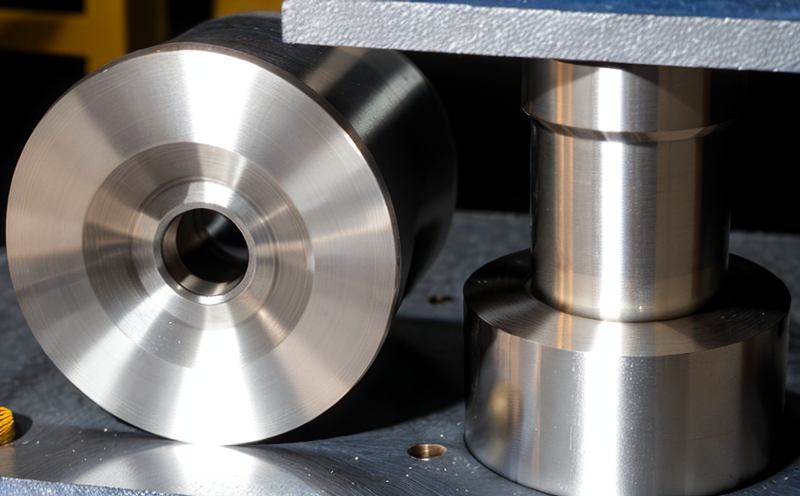ASTM E8 Tensile Testing of Nanostructured Metallic Materials
The ASTM E8 tensile testing method has been a cornerstone in materials science and engineering for decades, providing reliable data on the mechanical properties of metallic specimens. When applied to nanostructured metals and alloys, this test presents unique challenges and opportunities due to the microstructural differences between conventional and nanostructured materials. Nanostructured metallic materials exhibit distinct mechanical behaviors compared to their bulk counterparts, primarily because of the increased surface area per unit volume and the presence of grain boundaries that can significantly influence material properties.
The ASTM E8 method involves subjecting a specimen to controlled tensile forces until failure occurs. For nanostructured metals, this process requires precise control over specimen preparation, including particle size distribution, homogeneity, and orientation. The choice of specimen geometry (dogbone or double dogbone) is critical in ensuring accurate stress-strain measurements, which are key for characterizing the mechanical behavior of these materials.
One major challenge in ASTM E8 testing on nanostructured metals lies in achieving uniform deformation across the entire sample due to the high surface-to-volume ratio. This can lead to localized plastic deformation and failure modes that differ from those observed in bulk samples. Therefore, careful consideration must be given to specimen geometry and loading conditions to minimize such effects.
The ASTM E8 method also plays a crucial role in understanding how processing parameters, such as heat treatment or cold working, affect the mechanical properties of nanostructured metals. By comparing tensile test results from different batches of samples prepared under varying conditions, researchers can gain insights into the impact of these processes on material integrity and performance.
In summary, ASTM E8 testing provides valuable information about the strength, ductility, and other mechanical characteristics of nanostructured metallic materials. However, when performing this test on such specimens, it is essential to account for their unique microstructural features and potential anisotropy in order to obtain meaningful results.
Applied Standards
| Standard | Description |
|---|---|
| ASTM E8 | Tensile testing of metallic materials. |
| ISO 6892-1:2016 | General requirements for the mechanical testing of metals - Part 1: Tension testing at ambient temperature. |
| EN 14615 | Determination of tensile properties of metallic materials with a circular cross-section. |
| IEC 60338-7 | Tensile testing of electrical and electronic components. |
Scope and Methodology
| Scope | Description |
|---|---|
| Material Type | Nanostructured metallic materials. |
| Specimen Preparation | Dogbone or double dogbone geometry, controlled particle size distribution and homogeneity. |
| Loading Rate | Controlled within 1 to 50 mm/min as specified by standard. |
| Test Environment | Room temperature unless otherwise specified. |
The ASTM E8 tensile testing method involves applying a controlled axial force on the specimen until it reaches its breaking point. For nanostructured metals, this process requires meticulous attention to detail during specimen preparation and loading. The goal is to ensure that the entire sample deforms uniformly under load without localized failures.
Specimen preparation for ASTM E8 tensile testing of nanostructured metallic materials typically involves grinding the material into particles with a specific size range and then consolidating these particles into compact specimens through various methods such as hot pressing or cold isostatic pressing. The resulting specimens are carefully inspected to ensure uniformity in particle distribution and orientation.
Loading rates play an important role in ASTM E8 testing, particularly when dealing with nanostructured metals where even small differences in loading rate can lead to significant variations in test results. Therefore, it is recommended to follow the specified loading rate provided by the relevant standard (typically between 1 to 50 mm/min), depending on the material being tested.
The test environment for ASTM E8 tensile testing of nanostructured metallic materials should be controlled at room temperature unless otherwise specified in the specific application or standard. This helps ensure consistent results across multiple tests and batches.
Why Choose This Test
- Precise measurement of tensile properties.
- Compliance with international standards.
- Ability to assess mechanical behavior under controlled conditions.
- Insight into the impact of processing parameters on material performance.
The ASTM E8 tensile test provides precise measurements of tensile strength, yield strength, elongation at break, and other critical mechanical properties. This information is essential for ensuring product quality and safety in various industries where nanostructured metals are used.
By adhering to internationally recognized standards like ASTM E8, ISO 6892-1:2016, EN 14615, and IEC 60338-7, laboratories can ensure that their test results are consistent with industry best practices. This is especially important in the development of new materials or when comparing different batches of raw materials.
Understanding how processing parameters affect the mechanical behavior of nanostructured metals allows manufacturers to optimize production processes and improve product performance. For example, by adjusting heat treatment temperatures or cold working procedures based on ASTM E8 test results, companies can enhance the strength and ductility of their products without compromising other important properties like toughness.





